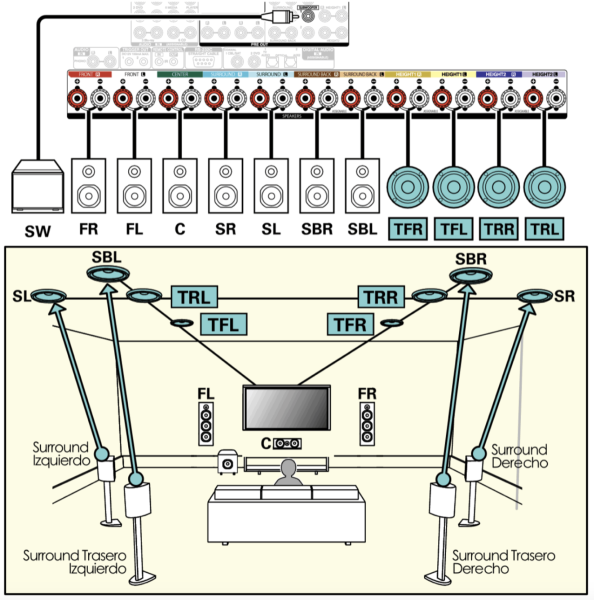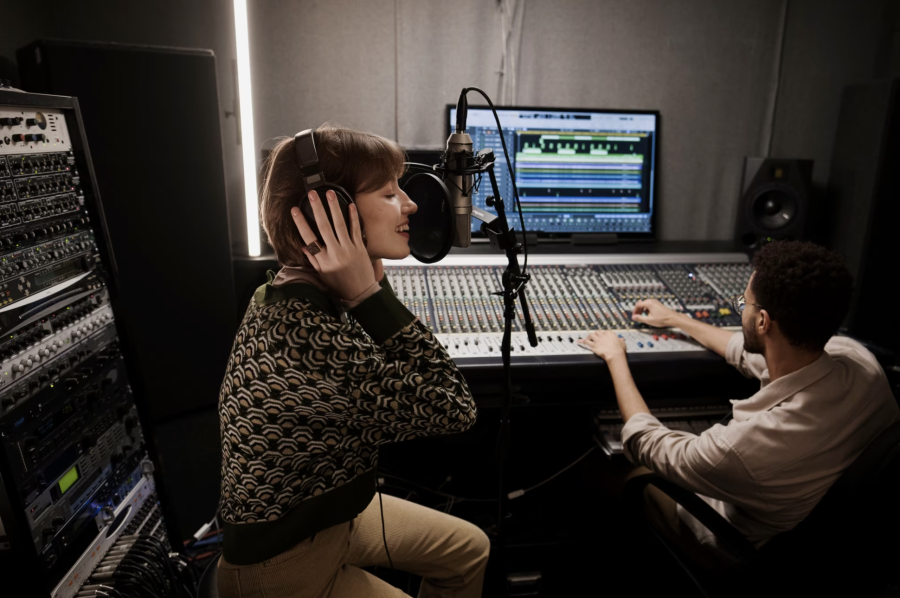Yesterday, with some friends we talked about what was Dolby Atmos and why suddenly Apple Music and Spotify are so interested in it? That is why today I decided to write this post.
A few weeks ago Spotify announced the construction of a couple of recording studios with Dolby Atmos capability and just a few days ago Apple indicated that very soon, if as artists we want to be on the official Apple Music charts, we must present our finished music compatible with this technology.
Dolby Atmos is a surround audio technology announced in 2012, it is not a new thing, in fact it was launched for the first time with the animated film "Brave" by Pixar, which unlike the existing surround and 7.1 systems up to that moment, DOLBY uses a different nomenclature “7.1.4”, this referring to 7 speakers surrounding the listener, 1 subwoofer and 4 more speakers hanging over the listener. This was initially designed to improve the placement of objects in a three-dimensional space within the cinema, it is also beginning to be attractive for music, since with this scheme it is possible to correct phase problems that surround systems carried when mixing elements instrumentals.
There are already many musical works remixed and mastered in DOLBY ATMOS, one of them is the 1992 R.E.M album “Automatic for the people” although the first album released in history with this technology was the great album by Italian Luca Turilli and Rhapsody “ Prometheus” released in 2016 on Blu Ray format.
But why so much interest in Dolby Atmos right now? First of all, this technology at the music production level is much more expensive than what a home studio and semi-professional studios can acquire. Atmos needs not only a much larger number of speakers than the traditional "Stereo" but also sound cards with at least 12 outputs and of course a $300 license that DOLBY charges for being able to use its software, this is not cheap on the market.
We are facing a before and after in the way we consume music, perhaps comparable to the leap that occurred between "Mono" and "Stereo" at least 60 years ago. The big record labels are beginning to force this technology to make the difference between their signed artists and the others who are out there with no budget to pay for these services. Apple, Samsung and some other brands with mobile and audio products have been pushing this technology for some years, phones like Samsung's S8+ already boasted of having a surround audio Codec on their devices, Apple now reinforces its AirPods with the ability to bring Dolby to our ears and this is where the interest of these companies is shown so that the consumer knows this technology.
As for the reason Apple Music is interested in having all music uploaded in this format, it's probably because Dolby Atmos can help improve sound quality on its music streaming platform. By providing a more immersive listening experience for its users, Apple Music could attract more listeners and keep them engaged with its platform.
In addition, it is important to note that the adoption of Dolby Atmos in music is not exclusive to Apple Music. Other music streaming platforms such as Tidal and Amazon Music have also adopted the technology, and more platforms are expected to follow suit in the future.
Personally, I don't think that the homestudio is dead, but I do believe that the cost of producing professionally is once again becoming more expensive, as artists we can continue producing in our homes, in local studios as has happened up to now, but if you want to get there to the highest industry standards you should invest a little more in mixing engineers who have the right equipment, now not only doing a stereo mix but also a mix for dolby atmos, a stereo mastering and a specific mastering for dolby atmos . I'm also sure that in a few years, this technology will be much more affordable and within the reach of many more artists, but in the meantime it seems that the market is geared towards our reliance on expensive studios to be part of the industry standard.



